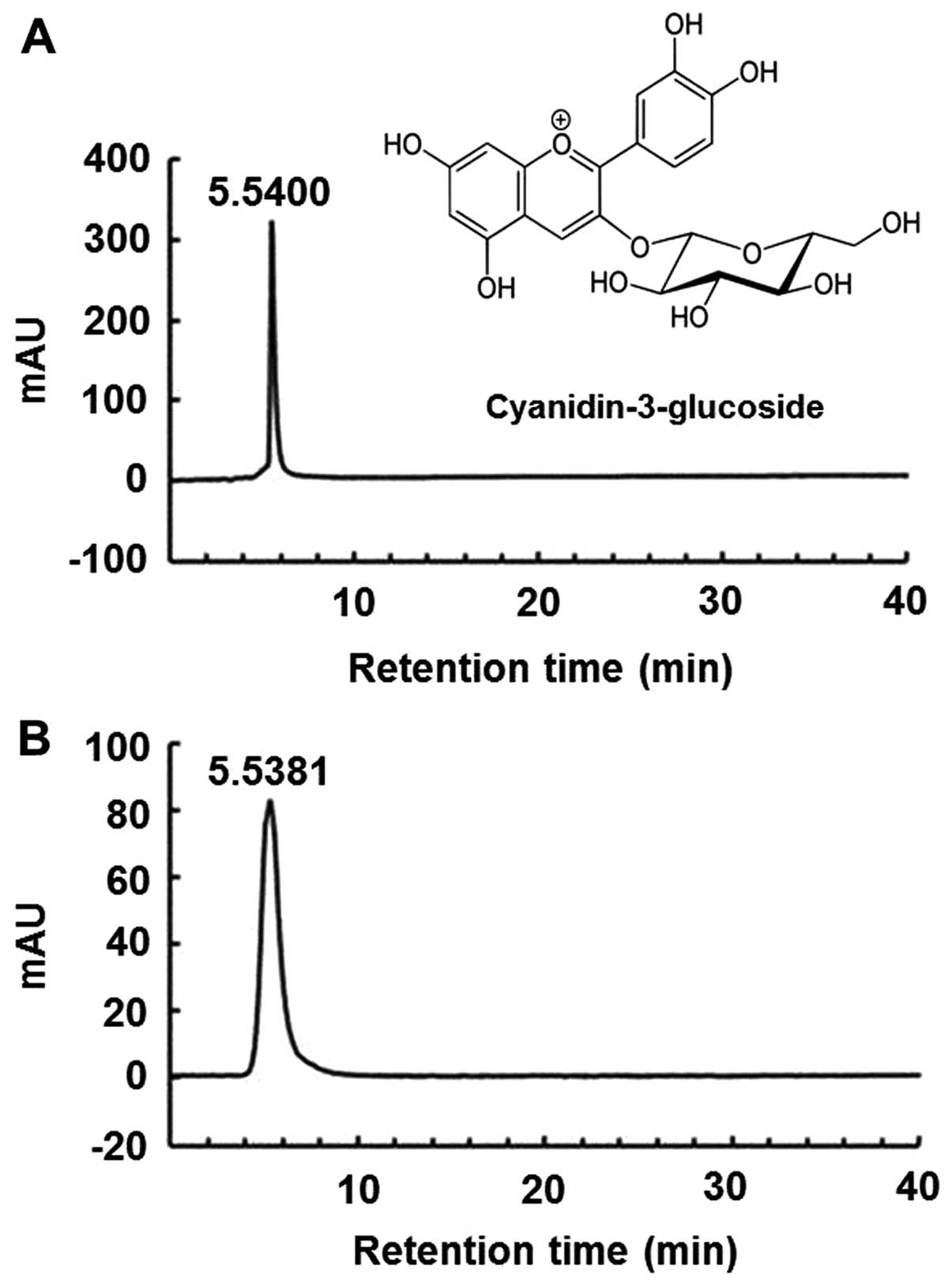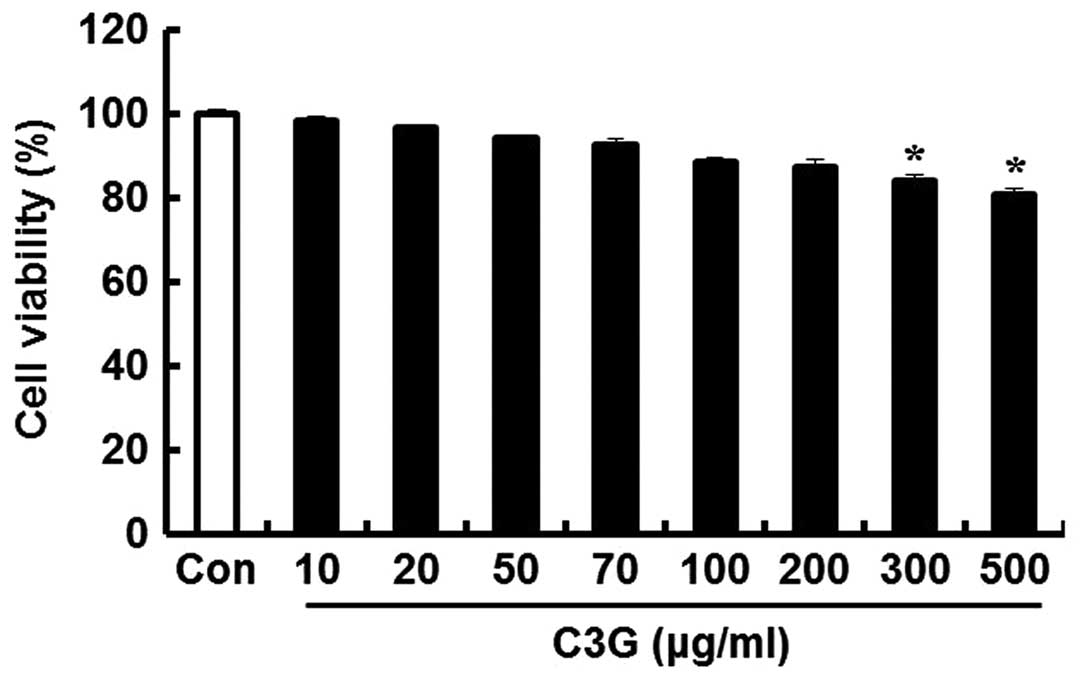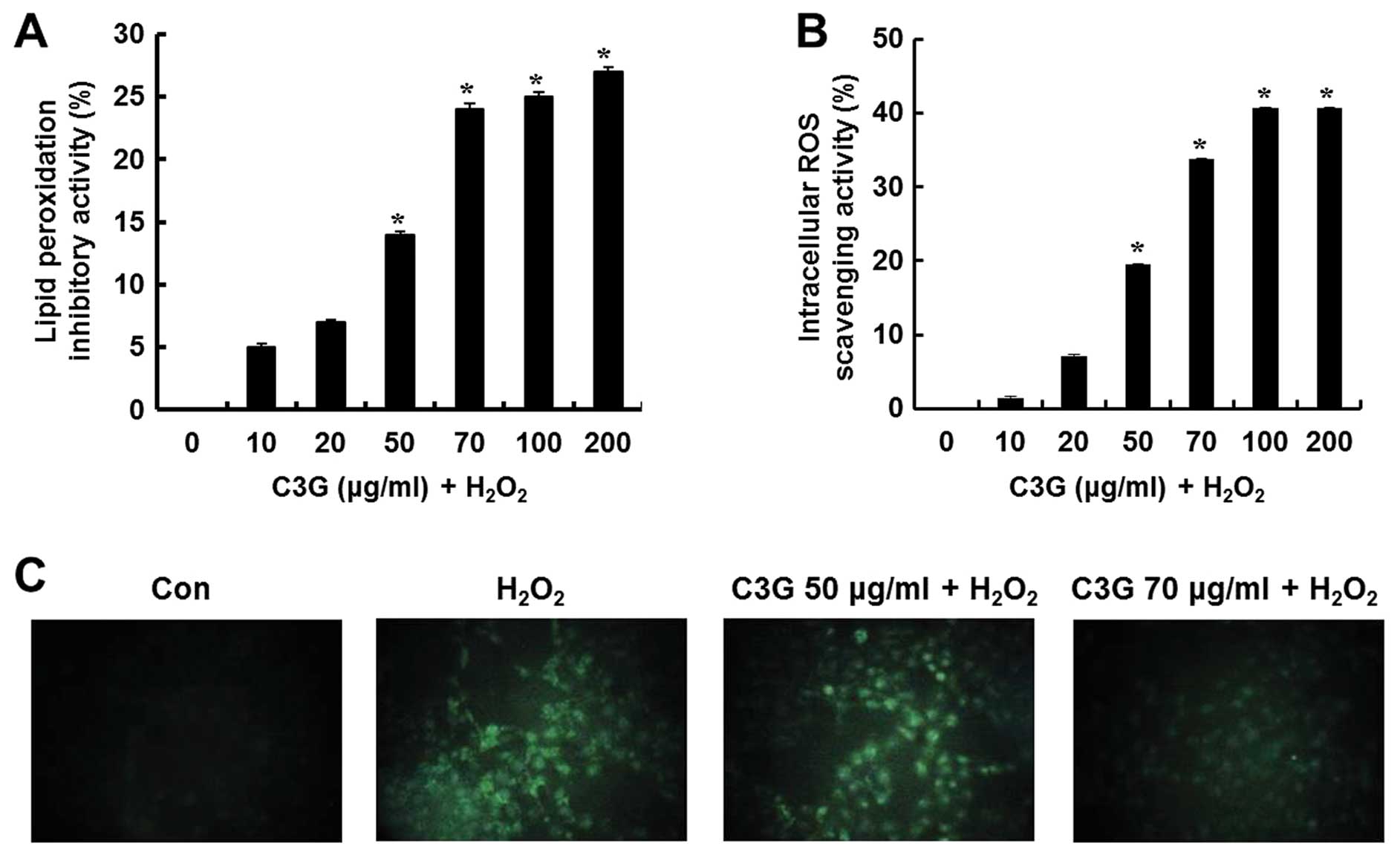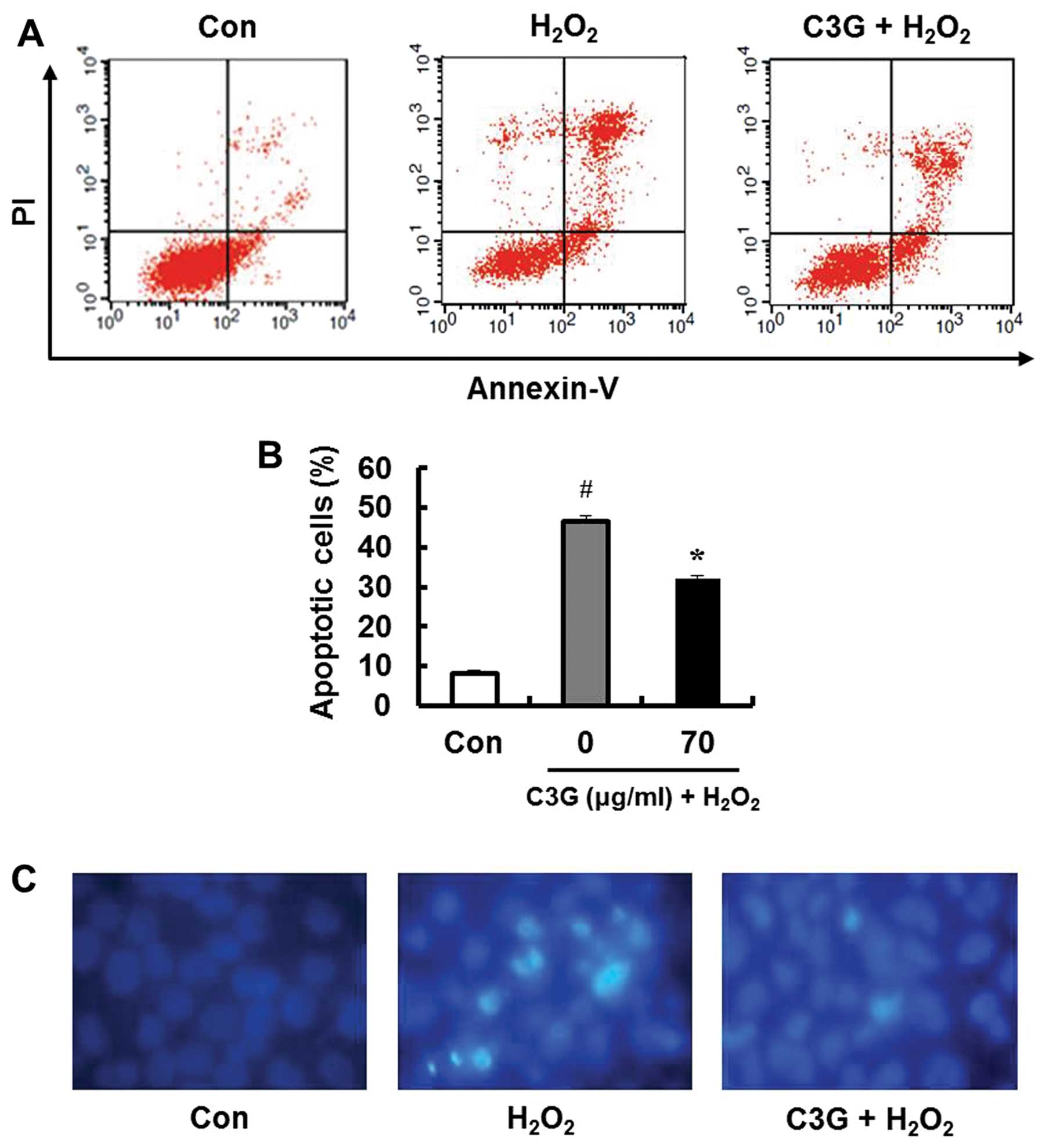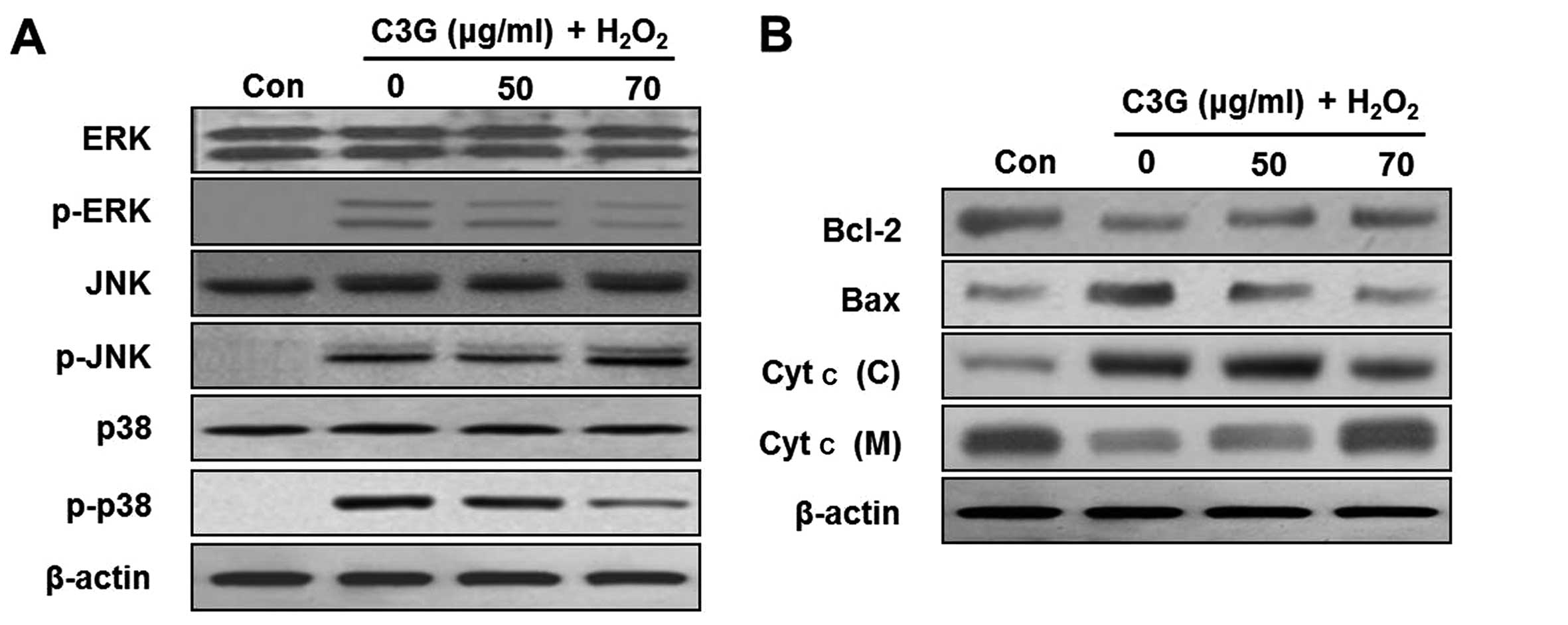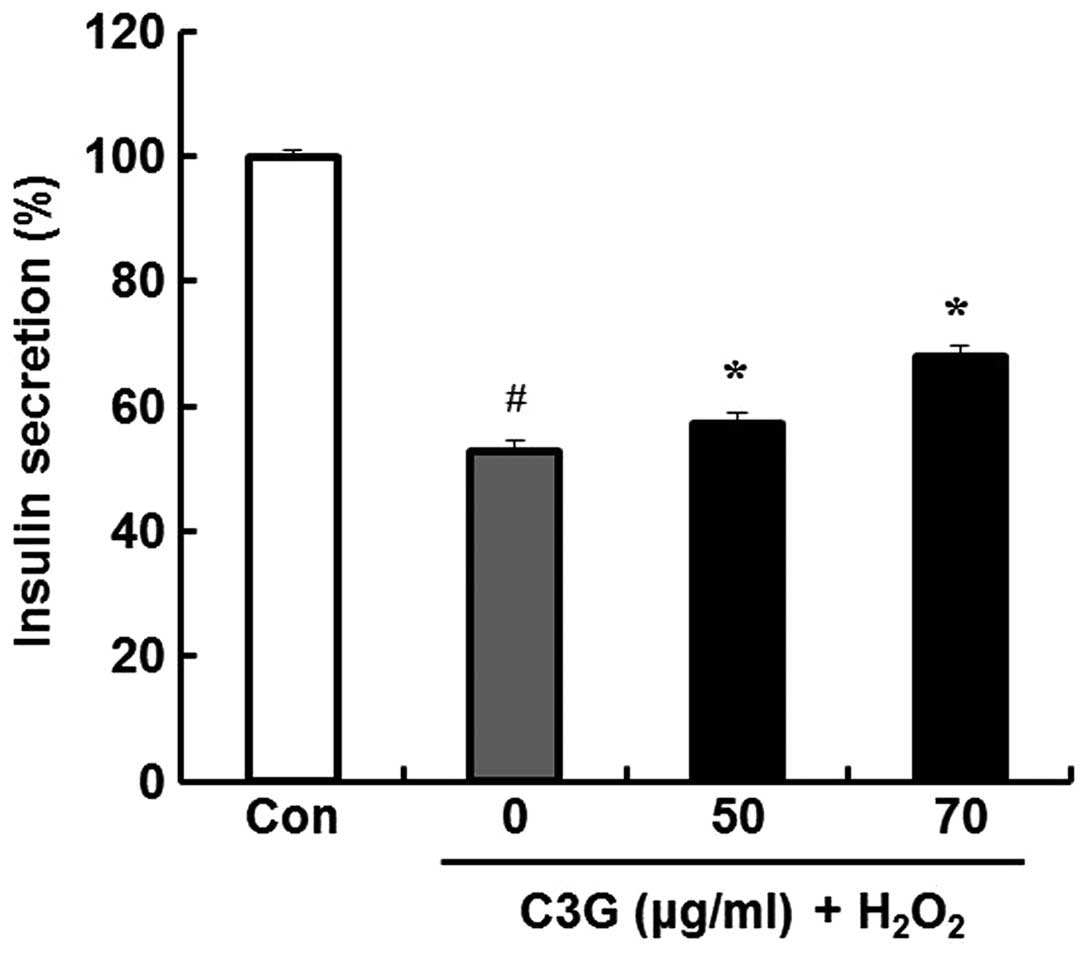|
1
|
Gray H and O’Rahilly S: Beta cell
dysfunction in non-insulin-dependent diabetes mellitus. Transplant
Proc. 26:366–370. 1994.PubMed/NCBI
|
|
2
|
Demirseren DD, Emre S, Akoglu G, Arpaci D,
Arman A, Metin A and Cakir B: Relationship between skin diseases
and extracutaneous complications of diabetes mellitus: clinical
analysis of 750 patients. Am J Clin Dermatol. 15:65–70. 2014.
View Article : Google Scholar
|
|
3
|
Lv L, Zheng L, Dong D, Xu L, Yin L, Xu Y,
Qi Y, Han X and Peng J: Dioscin, a natural steroid saponin, induces
apoptosis and DNA damage through reactive oxygen species: a
potential new drug for treatment of glioblastoma multiforme. Food
Chem Toxicol. 59:657–669. 2013. View Article : Google Scholar : PubMed/NCBI
|
|
4
|
Ni Q, Xu G, Gao Q, Yang D and Zhang Y:
Evaluation of reactive oxygen species scavenging activities and DNA
damage prevention effect of Pleioblastus kongosanensis f.
aureostriatus leaf extract by chemiluminescence assay. J Photochem
Photobiol B. 128:115–121. 2013. View Article : Google Scholar : PubMed/NCBI
|
|
5
|
Gutierrez RM: Effect of the hexane extract
of Piper auritum on insulin release from beta-cell and oxidative
stress in streptozotocin-induced diabetic rat. Pharmacogn Mag.
8:308–313. 2012. View Article : Google Scholar
|
|
6
|
Mane C, Loonis M, Juhel C, Dufour C and
Malien-Aubert C: Food grade lingonberry extract: polyphenolic
composition and in vivo protective effect against oxidative stress.
J Agric Food Chem. 59:3330–3339. 2011. View Article : Google Scholar : PubMed/NCBI
|
|
7
|
Martin MA, Fernández-Millán E, Ramos S,
Bravo L and Goya L: Cocoa flavonoid epicatechin protects pancreatic
beta cell viability and function against oxidative stress. Mol Nutr
Food Res. 58:447–456. 2014. View Article : Google Scholar
|
|
8
|
Aramwit P, Petcharat K and Supasyndh O:
Efficacy of mulberry leaf tablets in patients with mild
dyslipidemia. Phytother Res. 25:365–369. 2011.
|
|
9
|
Song N, Pang W, Yang H, Tan L, Fu J, Li H
and Jiang Y: Primary study on protective effect of mulberry
extracts on Abeta25-35-induced PC12 cells injury. Wei Sheng Yan
Jiu. 41:925–929. 2012.In Chinese.
|
|
10
|
Stefănuţ MN, Căta A, Pop R, Tanasie C, Boc
D, Ienascu I and Ordodi V: Anti-hyperglycemic effect of bilberry,
blackberry and mulberry ultrasonic extracts on diabetic rats. Plant
Foods Hum Nutr. 68:378–384. 2013. View Article : Google Scholar
|
|
11
|
Chang JJ, Hsu MJ, Huang HP, Chung DJ,
Chang YC and Wang CJ: Mulberry anthocyanins inhibit oleic acid
induced lipid accumulation by reduction of lipogenesis and
promotion of hepatic lipid clearance. J Agric Food Chem.
61:6069–6076. 2013. View Article : Google Scholar : PubMed/NCBI
|
|
12
|
Chen PN, Chu SC, Chiou HL, Kuo WH, Chiang
CL and Hsieh YS: Mulberry anthocyanins, cyanidin 3-rutinoside and
cyanidin 3-glucoside, exhibited an inhibitory effect on the
migration and invasion of a human lung cancer cell line. Cancer
Lett. 235:248–259. 2006. View Article : Google Scholar
|
|
13
|
Jiang Y: Effects of anthocyanins derived
from Xinjiang black mulberry fruit on delaying aging. Wei Sheng Yan
Jiu. 39:451–453. 2010.In Chinese. PubMed/NCBI
|
|
14
|
Liu LK, Lee HJ, Shih YW, Chyau CC and Wang
CJ: Mulberry anthocyanin extracts inhibit LDL oxidation and
macrophage-derived foam cell formation induced by oxidative LDL. J
Food Sci. 73:H113–H121. 2008. View Article : Google Scholar
|
|
15
|
Ohkawa H, Ohishi N and Yagi K: Assay for
lipid peroxides in animal tissues by thiobarbituric acid reaction.
Anal Biochem. 95:351–358. 1979. View Article : Google Scholar : PubMed/NCBI
|
|
16
|
Lee JH, Lee JS, Kim YR, Jung WC, Lee KE,
Lee SY and Hong EK: Hispidin isolated from Phellinus linteus
protects against hydrogen peroxide-induced oxidative stress in
pancreatic MIN6N β-cells. J Med Food. 14:1431–1438. 2011.
View Article : Google Scholar : PubMed/NCBI
|
|
17
|
Bian J, Wang K, Kong X, Liu H, Chen F, Hu
M, Zhang X, Jiao X, Ge B, Wu Y and Meng S: Caspase- and
p38-MAPK-dependent induction of apoptosis in A549 lung cancer cells
by Newcastle disease virus. Arch Virol. 156:1335–1344. 2011.
View Article : Google Scholar : PubMed/NCBI
|
|
18
|
Haddad JJ: The role of Bax/Bcl-2 and
pro-caspase peptides in hypoxia/reperfusion-dependent regulation of
MAPK(ERK): discordant proteomic effect of MAPK(p38). Protein Pept
Lett. 14:361–371. 2007. View Article : Google Scholar : PubMed/NCBI
|
|
19
|
Ravindran J, Gupta N, Agrawal M, Bala
Bhaskar AS and Lakshmana Rao PV: Modulation of ROS/MAPK signaling
pathways by okadaic acid leads to cell death via, mitochondrial
mediated caspase-dependent mechanism. Apoptosis. 16:145–161. 2011.
View Article : Google Scholar
|
|
20
|
Brayman KL, Nakai I, Field J, Lloveras JJ,
Farney A, Najarian JS and Sutherland DE: Intrathymic islet
allografts prevent hyperglycemia and autoimmune beta-cell
destruction in BB rats following transplantation in the prediabetic
period. Transplant Proc. 25:284–285. 1993.PubMed/NCBI
|
|
21
|
Nakanishi K and Watanabe C: 2008. Rate of
beta-cell destruction in type 1 diabetes influences the development
of diabetic retinopathy: protective effect of residual beta-cell
function for more than 10 years. J Clin Endocrinol Metab.
93:4759–4766. 2008. View Article : Google Scholar : PubMed/NCBI
|
|
22
|
Pi J, Zhang Q, Fu J, Woods CG, Hou Y,
Corkey BE, Collins S and Andersen ME: ROS signaling, oxidative
stress and Nrf2 in pancreatic beta-cell function. Toxicol Appl
Pharmacol. 244:77–83. 2010. View Article : Google Scholar :
|
|
23
|
Sasaki T, Unno K, Tahara S and Kaneko T:
Age-related increase of reactive oxygen generation in the brains of
mammals and birds: is reactive oxygen a signaling molecule to
determine the aging process and life span? Geriatr Gerontol Int.
10(Suppl 1): S10–S24. 2010. View Article : Google Scholar : PubMed/NCBI
|
|
24
|
Liu Z, Celotto AM, Romero G, Wipf P and
Palladino MJ: Genetically encoded redox sensor identifies the role
of ROS in degenerative and mitochondrial disease pathogenesis.
Neurobiol Dis. 45:362–368. 2012. View Article : Google Scholar
|
|
25
|
Tsedensodnom O and Sadler KC: ROS: redux
and paradox in fatty liver disease. Hepatology. 58:1210–1212. 2013.
View Article : Google Scholar : PubMed/NCBI
|
|
26
|
Zhang C, Liu J, Pan H, Yang X and Bian K:
Mitochondrial dysfunction induced by excessive ROS/RNS-metabolic
cardiovascular disease and traditional Chinese medicines
intervention. Zhongguo Zhong Yao Za Zhi. 36:2423–2428. 2011.In
Chinese. PubMed/NCBI
|
|
27
|
Pervaiz S and Clément MV: Hydrogen
peroxide-induced apoptosis: oxidative or reductive stress? Methods
Enzymol. 352:150–159. 2002. View Article : Google Scholar : PubMed/NCBI
|
|
28
|
Chen CH, Chen SJ, Su CC, Yen CC, Tseng TJ,
Jinn TR, Tang FC, Chen KL, Su YC, Lee KI, Hung DZ and Huang CF:
Chloroacetic acid induced neuronal cells death through oxidative
stress-mediated p38-MAPK activation pathway regulated
mitochondria-dependent apoptotic signals. Toxicology. 303:72–82.
2013. View Article : Google Scholar
|
|
29
|
Supanji, Shimomachi M, Hasan MZ, Kawaichi
M and Oka C: HtrA1 is induced by oxidative stress and enhances cell
senescence through p38 MAPK pathway. Exp Eye Res. 112:79–92. 2013.
View Article : Google Scholar : PubMed/NCBI
|
|
30
|
Cargnello M and Roux PP: Activation and
function of the MAPKs and their substrates, the MAPK-activated
protein kinases. Microbiol Mol Biol Rev. 75:50–83. 2011. View Article : Google Scholar : PubMed/NCBI
|
|
31
|
Fu YC, Yin SC, Chi CS, Hwang B and Hsu SL:
Norepinephrine induces apoptosis in neonatal rat endothelial cells
via a ROS-dependent JNK activation pathway. Apoptosis.
11:2053–2063. 2006. View Article : Google Scholar : PubMed/NCBI
|



